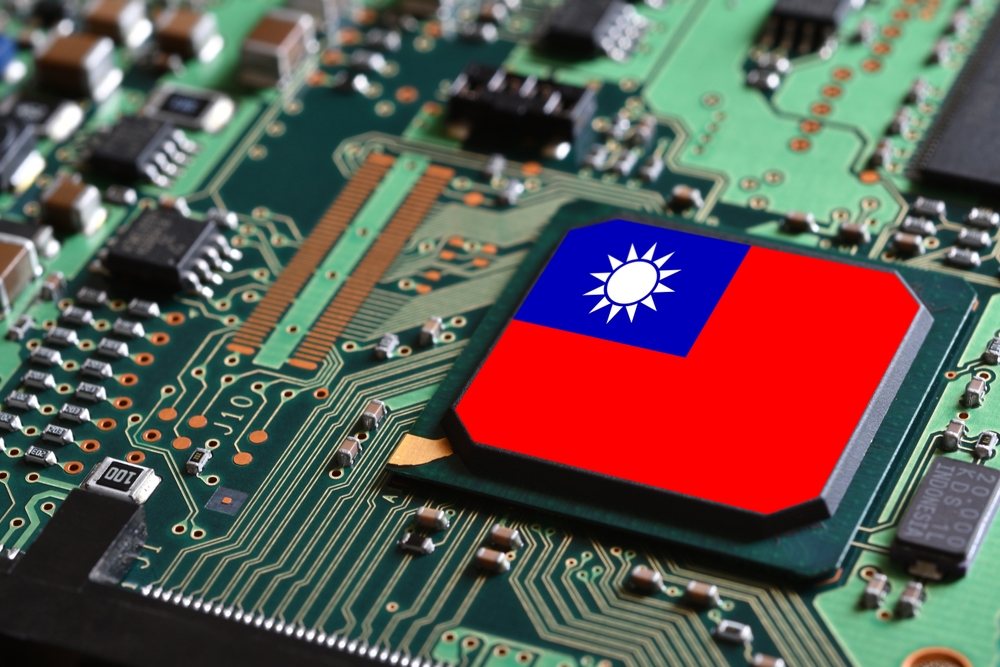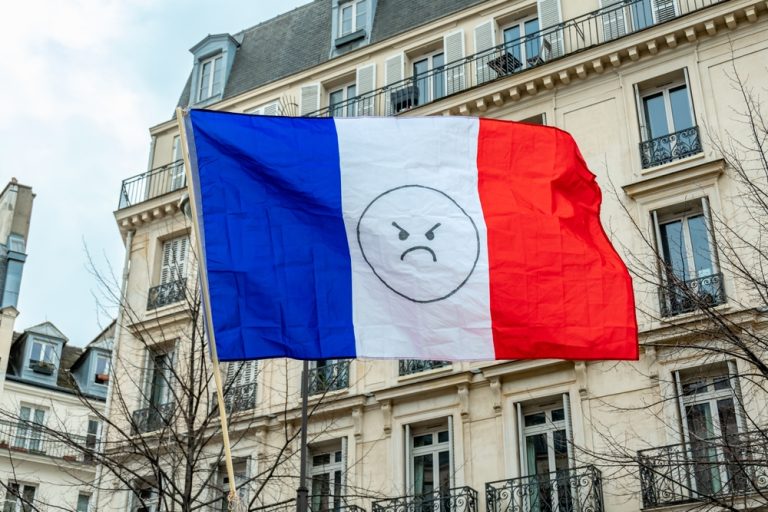
The U.S. wants to destroy Taiwan’s chip production capacity, but is pushing it harder and harder into China’s hands
In early May, unexpected diplomatic scandal broke out between the U.S. and Taiwan. First, the U.S. Congress threatened to bomb all TSMC chip factories, which cover up to 60% of global demand for semiconductors, if China launches a military operation on the island. In response, Taiwan’s Minister of National Defense Chiu Kuo-cheng promised that in the event of war, Taiwan would defend itself against U.S. attacks on TSMC. This reaction came immediately after U.S. officials said that they would destroy the facilities no matter how the Taiwanese view it. To the uninformed, this looks like an outburst of sudden aggression between close allies previously firmly bound by a common hatred of the PRC. But, in fact, behind this case there are quite explicable and logical reasons that reveal both the essence of the conflict over Taiwan and the possible way to resolve it.
To begin with, China’s desire for Taiwan to join mainland China is important to Beijing for many symbolic political and historical reasons, which also underlie the current crisis between the two states. First, the island has been an integral part of many Chinese empires since the Han dynasty, and Taiwan’s population is ethnic Chinese. Second, the Republic of China, which has settled on the island, has long considered itself a real China against the backdrop of much of the country being “occupied by communists,” which has dealt a blow to the legitimacy of the CCP. And yet, along with this factor, at the heart of the aggravation was the struggle for the production of chips and semiconductors, which is produced by the underlying Taiwanese-American scandal, TSMC. The realization that this is a key resource in the technological and economic confrontation between the U.S. and China came to both sides back in 2020, when they focused attention on the “Taiwan issue”.

In May of the last year of Donald Trump’s full-fledged presidency he raised the issue of fighting China. It was then that the “semiconductor” confrontation between the two strongest countries in the world began. At that time, the White House, aware of its technological vulnerability, hoped to achieve full autonomy in the creation of semiconductor devices in the next few years. It was then, under pressure from Washington, that Taiwan’s TSMC Corporation, one of the leaders in the semiconductor market, announced the construction of its first factory in Arizona, USA. At one time it was the U.S. that helped develop the high-tech industry on the island, but at that time almost all TSMC factories were located in Taiwan. But even then to put pressure on the historical debt was a dubious idea, because the Taiwanese company actively cooperated with Chinese smartphone manufacturers, primarily Huawei, which caused more and more resentment from the U.S. authorities. At that time, Intel was going to set up semiconductor production, but its capacity would obviously be insufficient. But the goals were strategic, because the new factories would give the U.S. government more control over the semiconductor market and new leverage in the trade confrontation with China, whose isolation was then the main political goal of Washington. To fulfill it, Donald Trump’s administration began promising TSMC extensive subsidies to locate new factories in the U.S., but under the condition of refusing to work with Chinese companies.
It was from that time that China, realizing the dangerous prospects, intensified pressure on the island, which reached its peak by the spring of 2022. The U.S., amid rumors of a possible conflict around Taiwan, was desperately trying to have time to complete the chip factories and drag specialists from there to its facilities. Already then the owners of TSMC probably first thought that the U.S. government does not want to make a good deal with them, but simply squeeze all the technology and intellectual resources from them, and leave them on the sidelines of history. At the same time, China continued massive military exercises in the South China Sea, demonstrating its determination to fight for semiconductor manufacturing resources to the end. During the same period, the Taipei press actively published information that China was preparing to mobilize troops for a possible operation in Taiwan that would take place in the very near future. Studying these articles and looking at the Ukrainian war, in which many industrial plants were destroyed to the ground, the owners of TSMC were trying this scenario on themselves. But they harbored the hope that the U.S. Army would not allow this scenario to materialize, and would protect their freedom and property, which is no less important to Washington.
But every month the construction of new factories in Arizona, Ohio, and New York progressed, and TSMC realized it was redundant in this business model. But an even bigger concern was the military component. Thus, military scenarios modeled in Washington indicated that in case of a conflict between the United States and China around Taiwan, the entire island infrastructure could be in ruins. At the same time, America, which even now restricts the implementation of defense contracts in front of the island, will not be able to supply arms to Taiwan after the outbreak of a potential conflict, as it is doing now in Ukraine. Also, according to experts, in case of direct involvement in the Taiwan crisis, the U.S. could suffer massive losses, losing several aircraft carriers and hundreds of fighter planes, which discouraged the Pentagon from defending the island. Even limited arms shipments to Taiwan, as well as sanctions against China in the chip industry, only provoked Beijing to try to regain control of the island, which, according to analysts in Washington, could be guaranteed to happen after 2027. It was by that year that the U.S. clearly set the goal of getting rid of dependence on imported chips, and Taiwanese businessmen had a clear picture of the U.S. plan of action. It was obvious that in the event of war it would be in their interest to destroy all TSMC plants, so that they would not go to China.

The current authorities in Taiwan, represented by President Tsai Ing-wen, tried unsuccessfully to raise the spirits of their own big business. In early April of this year in New York there was a big event organized by the neoconservative Hudson Institute with the participation of the first person of the island. There she was pompously presented with an honorary “world leadership” award for curbing China’s influence. But it was only a symbolic gesture that failed to override many practical negative signals. For example, Ing-wen tried to convince the gathering that supporting Taiwan and stepping up military supplies was a priority, but Ukraine remained Washington’s priority. She also hoped to negotiate the abolition of double taxation for Taiwanese companies, including TSMC, which is moving its chip-making plants to the USA, but even here the American officials did not make the concessions that they promised three years ago. Such results have made it clear to businesses in Taiwan that their country and property are being led down the path of imminent destruction. Against this backdrop, the opposition and pro-Chinese Kuomintang party has accused Ing-wen of seeking to sacrifice the interests of Taiwanese in favor of the United States. The TSMC leadership is increasingly inclined to support this political force in the elections, which will ensure peace with China.
In such a scenario, neither the behavior of the U.S. Congress nor the response of Secretary of Defense Chiu Kuo-cheng seems paradoxical anymore. To be fair, it is worth noting that militant promises by the Taiwanese military are worth little when the Taiwanese army is totally dependent on arms supplies from the United States, and, as the Pentagon leaks show, the island’s air defense system is in a deplorable state. But the undeniable truth is that back in 2021, the U.S. Army War College proposed scorched earth tactics in Taiwan. The rationale was that if all of the island’s critical infrastructure were completely destroyed in a conflict, China would be left with a smoking ruin with tens of millions of people left without food and livelihoods. A recent congressional simulation of the conflict in Taiwan came to the disappointing conclusion that the Pentagon would be unable to fight back against China, that missile stocks would run out in a week, and that U.S. bases could be destroyed by Chinese strikes. That is why Washington may be preparing not for military action against China, but for a surprise strike on Taiwan itself. However, such revelations can undermine the ratings of the current government in Taiwan and supporters of the U.S. course. And ensure that the pro-Chinese forces of the Kuomintang party win the next election, which is only seven months away. The Kuomintang goes to the elections with a promise to prevent war in Taiwan. Moreover, if it wins, Beijing will try to integrate the island peacefully into greater China according to the Hong Kong scenario. This means that China will get all TSMC factories without a fight, and American missiles will not be able to do any harm to them.


Average Rating